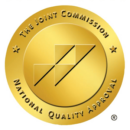Stimulants prescribed to treat conditions like narcolepsy and attention deficit hyperactivity disorder (ADHD) are now a reason some seek the help of drug rehab centers in NJ. Often abused by high school and college students looking to keep themselves awake for long hours, Adderall has quickly become a way for individuals to remain alert and focused during studying and testing.
With high rates of Adderall abuse and addiction among young people, it is important to understand just what the drug does and how it affects individuals.
Why is Adderall Prescribed?
Stimulants like Adderall have been shown to boost and balance neurotransmitters in the brain. For this reason, they correct hyperactivity and lack of focus in ADHD or attention deficit disorder (ADD) patients.
Adderall is a combination stimulant (of amphetamine and dextroamphetamine) that works in the central nervous system and increases focus while decreasing impulsiveness. It has also been found to help sufferers of narcolepsy from bouts of unconsciousness and sleepiness.
Adderall and Adderall XR: What’s the Difference?
There are two different types of Adderall: Adderall and Adderall XR. Both are designed to treat people with ADHD and have the same active ingredients, but each medication has different dosages and is processed by the body differently.
While Adderall and Adderall XR both increase the availability of neurotransmitters in the central nervous system, Adderall XR is an extended-release medication. This means that XR tablets take longer to dissolve and their active ingredients are released throughout the day into the body. Because of how each of these drugs reacts in your body in different ways, they are also prescribed differently. In releasing chemicals slowly, XR tablets provide a therapeutic effect on the human body.
Regular Adderall comes in the form of an immediate-release tablet, which means that its active ingredients are distributed throughout the body right away. These tablets are usually recommended for people with narcolepsy.
Adderall Dosage
The proper Adderall dosage varies depending on the patient. How much you take and how much time is allowed between doses will depend on both the reason for which you’re taking the medicine and the strength of the medicine.
A standard dosage of Adderall XR (extended-release tablets) will be 20 mg once a day in the morning for adults with ADHD, 10 mg once a day in the morning for children ages 13 to 17, and 10 mg once a day in the morning (not exceeding 30 mg per day) for children ages 6 to 12. Children younger than 6 who have ADD/ADHD will need to be closely observed by a doctor before being prescribed medication.
People who have narcolepsy will most likely take regular Adderall tablets. Adults and children ages 12 and older will typically take 10 mg once a day (divided into two doses). Children ages 6 to 12 take 5 mg per day, and dosages for children younger than 6 will be determined by a doctor. Regular Adderall tablets for people with ADHD will have similar but slightly smaller dosages to those of people with narcolepsy.
If you are prescribed Adderall, you must follow the dosage instructed by your doctor so that you may avoid abusing it or developing an addiction to it. If you take Adderall without a prescription, you are abusing it.
How Does Adderall Affect the Body and Brain?
Adderall, a central nervous stimulant (CNS), speeds up your brain activity by increasing the availability of dopamine and norepinephrine in your CNS connections. Norepinephrine and dopamine are both neurotransmitters, which are chemical messengers. Norepinephrine helps release adrenaline, whereas dopamine produces feelings of happiness.
When Adderall’s active ingredients meet the human body, you become more alert and focused. This has proven to be beneficial for adults and children with ADHD as it helps them concentrate in a way that they normally can’t. However, people can develop an addiction to Adderall and may need it to feel happy if they don’t take the proper dosage.
Even when taken properly, Adderall can produce quite a few side effects in the body. These include:
- Frequent urge to urinate
- Side or lower back pain
- Irregular heartbeat or pulse
- Cloudy or bloody urine
- Headache
- Shivering
- Runny nose
- Diarrhea
- Muscle aches and pains
- Vomiting
A few of these side effects will go away naturally, but if they persist, you should reach out to your doctor.
Who Should Not Be Taking Adderall?
People who have a history of severe anxiety or agitation, tics, Tourette syndrome, and glaucoma, as well as heart disease and congenital heart defects, should avoid taking Adderall. It should also be avoided in cases of mental illness, high blood pressure and seizure disorders.
Adderall is not typically safe for adults ages 65 and older since it isn’t as safe as other medications for people this age.
Why is Adderall Abused?
Although an effective treatment for people with ADHD, Adderall’s stimulant properties and classification as a Schedule II controlled substance make it easy to abuse. College students frequently use it, either by snorting it or injecting it, to stay up late studying and perform better on exams and papers. Seven percent of U.S. university students report having taken stimulants non-medically at least once. However, 30 percent of college students have admitted to selling “study drugs” such as Adderall to other students. 1 in 4 college students also says they’ve been asked for stimulants to use as study drugs.
The longer Adderall is used, the more it alters a user’s ability to experience pleasure or happiness without the use of chemicals. Developing a tolerance and dependence on Adderall can lead to addiction. People who abuse Adderall most likely be depressed and irritable, and they may also have trouble concentrating and sleeping. Mood swings may also be pronounced in people who abuse Adderall.
With Adderall being so readily available on college campuses and the cost being a mere $2 to $5 per pill, the likelihood of abuse is very high. This combined with the pressures to perform in college, and there is a recipe for addiction.
Common Adderall Abuse with Other Substances
Adderall is popularly mixed with alcohol to cancel out the drug’s stimulant effects on the body. Although this combination may leave users feeling relaxed, it is highly dangerous and can inflict great harm on the human body. People who take Adderall and also drink alcohol have a higher chance of getting alcohol poisoning because the alertness it produces can disguise the effects of drunkenness.
Cocaine is another stimulant people mix with Adderall, and the combination of two stimulants working together can prove to be deadly. Marijuana, being a psychoactive drug, can clash with Adderall if they are mixed.
Signs and Symptoms of Adderall Abuse
Signs of Adderall abuse include:
- Taking more than the prescribed dosage
- Continued use despite negative side effects
- Taking it for other reasons besides medical, i.e. staying awake for long periods
- Need for larger doses over time to feel the same effect
- Stealing Adderall or buying it from an illegal source
Withdrawal symptoms of Adderall abuse include:
- Dizziness or faintness
- Seizures
- Changes in vision or blurred vision
- Fever
- Difficult or slow speech
- Low libido
- Blistering or peeling skin
Adderall Treatment Options
There are several treatment options for people suffering from Adderall abuse, the most popular of which involve therapy and medication-assisted treatment. The first thing to do when weaning patients off Adderall is to get them into detox. This course of treatment usually takes about 30 days and will help stop their physical dependence on Adderall.
After detox is complete, the next goal is to get patients suffering from Adderall abuse back to a normal mindset. Behavioral therapy is the most successful treatment for this.
- Individual counseling: Individual therapy for Adderall abuse will consist of one-on-one sessions with you and your therapist. You’ll begin your counseling treatment by talking with your therapist about your childhood and past life experiences that most likely led to your drug addiction. As your treatment progresses, you will learn how abusing Adderall has negatively impacted your life and those around you.
- Cognitive-behavioral therapy (CBT): CBT is a goal-oriented form of therapy that teaches the belief that negative thoughts lead to negative behaviors. During these sessions, your therapist will aim to change the way you think and eventually the way you feel. You will most likely have homework assignments to complete outside of therapy sessions that will help you progress in your recovery.
- Dialectical behavior therapy (DBT): DBT is a type of cognitive-behavioral therapy. DBT promotes balancing opposites, otherwise known as the theory of dialectics. This is the idea of avoiding a black-and-white approach to thinking and embracing all sides of an idea.
Discovery Institute Can Help with Adderall Addiction
If you or someone you know has a dependence on non-prescribed stimulants such as Adderall, the Discovery Institute can help. With both inpatient and outpatient programs, as well as holistic treatment and various types of therapy, each of our patients is supported in achieving long-term recovery. Contact us today to break your Adderall addiction in a safe and caring environment.
References:
https://www.livescience.com/41013-adderall.html
https://www.livescience.com/41013-adderall.html
Dr. Joseph Ranieri D.O. earned his BS in Pharmacy at Temple University School of Pharmacy in 1981 and His Doctorate Degree in Osteopathic Medicine at the Philadelphia College of Osteopathic Medicine in 1991. He is Board Certified by the American Board of Family Medicine and a Diplomate of the American Board of Preventive Medicine Addiction Certification. Dr. Ranieri has lectured extensively to physicians, nurses, counselors and laypeople about the Disease of Addiction throughout New Jersey and Pennsylvania since 2012.



